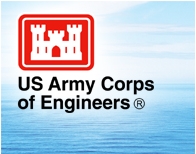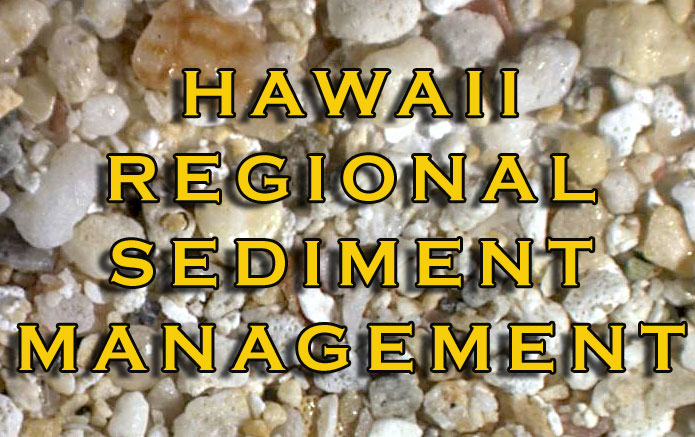Goals of the Pearl Harbor PRP include maximizing beneficial use of beach quality material that is dredged from the harbor. The project also investigates the potential for reducing the amount of littoral material that currently shoals within the entrance and main channels. The Diamond Head to Pearl Harbor regional sediment budget indicates that at least 3,000 cubic yards per year of littoral sediment is transported into the Pearl Harbor entrance channel. The majority of this material comes from the west. In 2004, approximately 143,000 cubic yards of material was dredged from the entrance channel through Nevada Point on the interior of the harbor. In 2006, about 25,000 cubic yards total was removed from Bishop Point, Hospital Point and the at the entrance of the Submarine Base. Another 23,000 cubic yards was dredged that same year from the western bank of the main channel near Iroquois Point.
Historically, the sediment dredged from Pearl Harbor entrance and main channels has been a combination of sand and silt. Generally, contractors have been responsible for disposal of the dredged material. No beach disposal areas are currently permitted for the placement of the suitable fraction of the sediment. RSM opportunities are being sought that would enable direct placement of beach quality dredge material back into the littoral system. Processing of the marginal quality portion of the dredged sediment is also being considered to facilitate beneficial use activities.
Private Interests: The Iroquois Point housing area is located on the central south shore of O‘ahu, immediately west of the Pearl Harbor entrance channel and adjacent to the community of ‘Ewa Beach. The project area extends along 4,200 feet of shoreline.
In 2003, the Iroquois Point housing area was leased by the U.S. Navy to Ford Island Housing, LLC, to maintain and operate for 65 years. This lease has recently been extended to 99 years. The chronic shoreline erosion problem was noted during the lease negotiations, and a lease “credit” was given by the Navy to Ford Island Housing in recognition of the erosion problem. The Navy has granted Ford Island Housing the requisite property interest and accompanying authority to undertake the proposed beach restoration and stabilization project and to maintain it for the duration of the lease.
The existing ground elevation at the housing area is +5 to +7 feet above MLLW. The shoreline consists of a sandy beach. Chronic erosion and shoreline recession, coupled with backshore flooding due to wave overtopping of the low-lying shore, have resulted in the abandonment and demolition of 16 shoreline homes to date. Several more homes are threatened by shoreline recession, and emergency shore protection for these homes was constructed in February 2004. Sewer lines running along the shore were abandoned and relocated in the 1980’s, and now the old concrete sewer pipe lies exposed and broken on the beach. Sand berms, wooden walls, and concrete walls have been constructed behind the beach crest to prevent flooding. All of these measures have ultimately failed, some failing almost immediately, because of the on-going erosion. The project proponent believes that eroded sand is transported to the east and into the Pearl Harbor entrance channel.
The Ford Island Housing proposed beach restoration plan consists of nine T-head groin structures extending along the 4,200-foot project reach. Approximately 97,000 cubic yards of sand would be placed on the beach. The sand will be obtained by maintenance dredging of accreted sand along the west side of the Pearl Harbor entrance channel in the vicinity of the Iroquois Lagoon entrance.
Pearl Harbor PRP: The following activities are being pursued in association with the Pearl Harbor PRP. These activities will be developed contingent upon the receipt of additional funding.
· Reduce Entrance Channel Shoaling:
- Identify Sources of Shoaling
- Intercept Material Before it Reaches the Channel
- Investigate Feasibility of Constructing Deposition Basin
· Identify Dredge Material Stockpile Areas:
- Capacity Requirements
- Land Ownership
- Identify Potential Safety Issues
· Designated Beach Disposal:
- Identify Disposal Area Location
- Quantify Disposal Volumes
- Identify Characteristics of Suitable Material
- Develop Construction Template
- Predict Ultimate Fate of Placed Material
· Investigate Post Processing of Dredged Material:
- Hydrocycloning
- Other Methods



